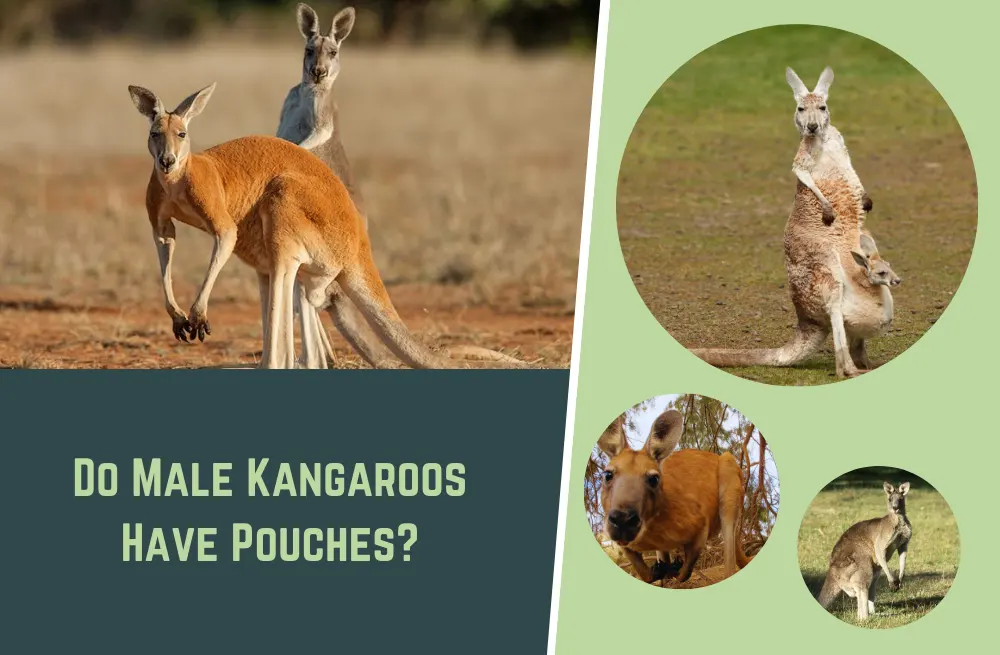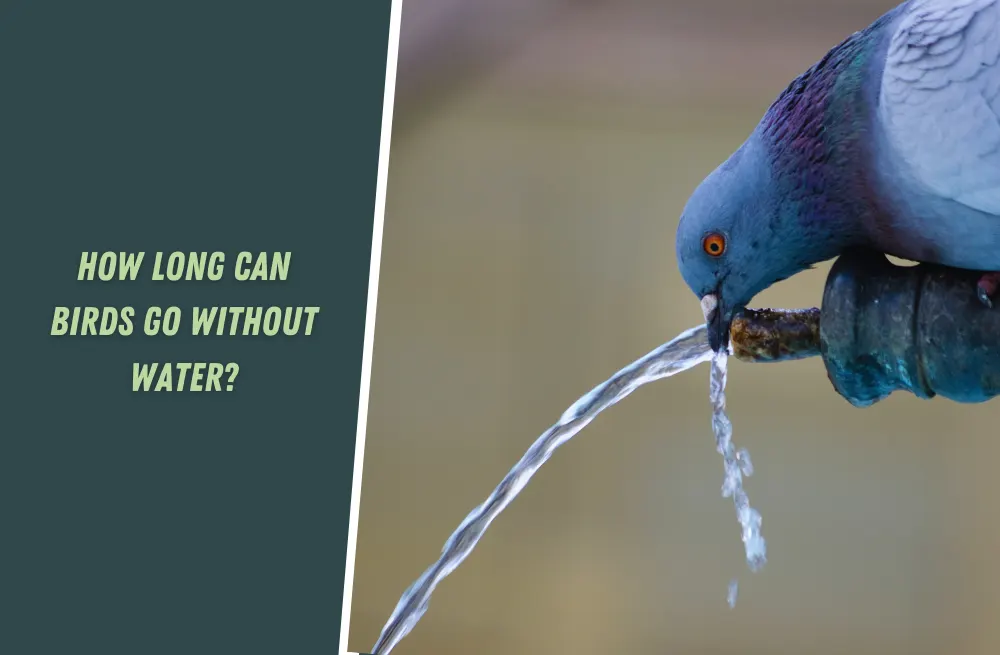The world of kangaroos is filled with fascinating wonders, and one of the most captivating aspects is the birth and growth of their young.
Known as joeys, these tiny kangaroos enter the world in a remarkable way. In this article, we will dive into the size of a newborn kangaroo and explore the intriguing questions surrounding their development.
So, let’s dive into the world of joeys and uncover the secrets of their size.
How big is a newborn kangaroo?
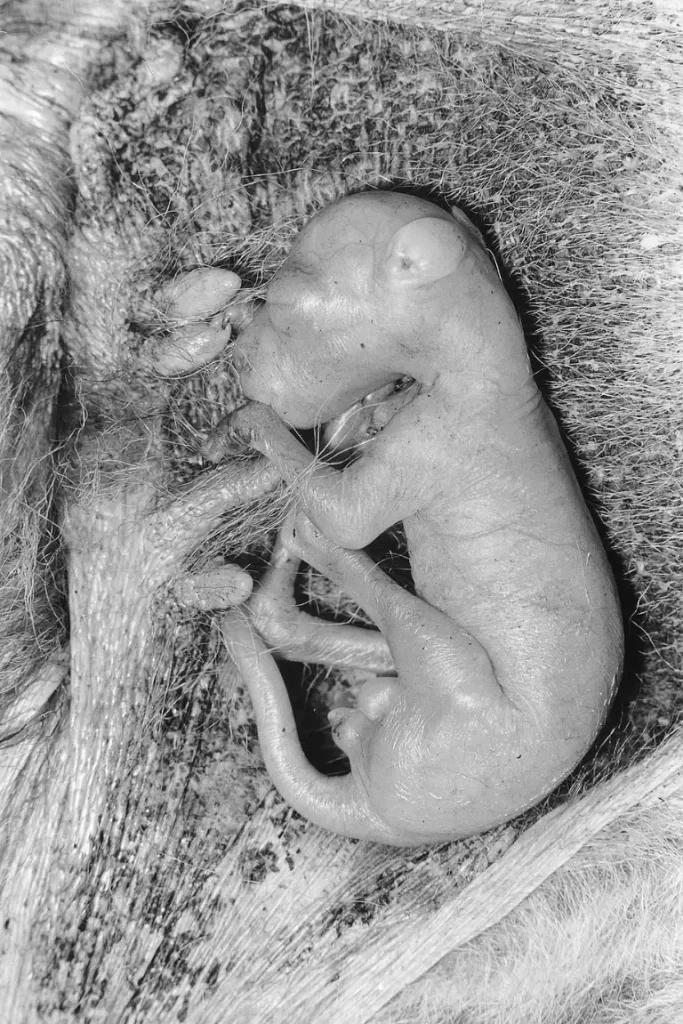
How big is a newborn kangaroo? Prepare to be amazed by the tiniest bundle of joy in the animal kingdom! When a kangaroo joey is born, it enters the world in a truly miniature form. At birth, these adorable joeys measure a mere 2 centimeters (less than an inch) in length and weigh just around 1 gram. That’s right—about the size of a grape or a jellybean!
Can you imagine holding something so incredibly small and delicate? It’s hard to fathom how such a tiny creature will eventually grow into the majestic kangaroo we all know. But fear not, this small size is perfectly suited for their unique development.
As soon as they are born, these mini kangaroos embark on an incredible journey of growth and survival. They instinctively crawl from the birth canal to their mother’s pouch, where they will spend the next several months. Inside the pouch, they find warmth, protection, and a constant supply of nourishment from their mother’s milk.
Why are joeys so tiny at birth?
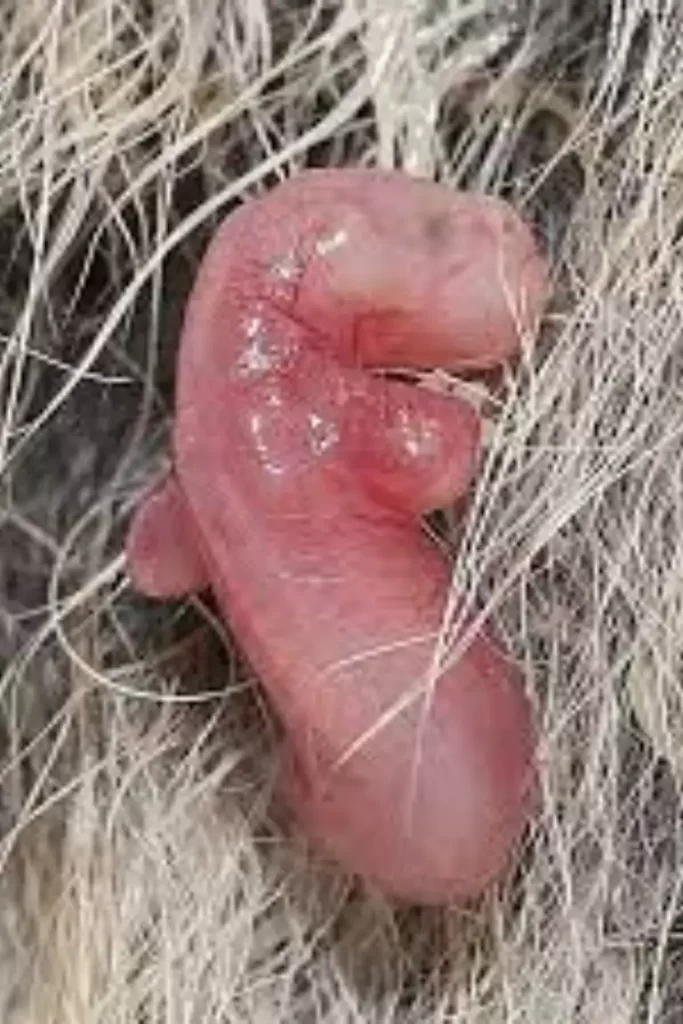
The small size of joeys at birth is due to their unique reproductive strategy. Kangaroos are marsupials, which means their young are born in a relatively undeveloped state. After a short gestation period of about 30 to 40 days, the tiny embryo crawls into the mother’s pouch, where it continues to develop and grow.
How long do joeys stay in the pouch?
Get ready for an inside look at the cozy world of kangaroo pouches! After their tiny beginnings, joeys have a special place to call home—their mother’s pouch. Inside this warm and secure haven, they embark on a remarkable journey of growth and discovery.
On average, joeys spend around 6 to 8 months nestled snugly inside the pouch. This extended period allows them to continue their development under the watchful care of their mother. It’s a bit like having a portable nursery on the go!
During their time in the pouch, joeys undergo incredible changes. They grow in size, gain strength, and develop the necessary skills to thrive in the outside world. Inside the pouch, they find comfort, nourishment, and protection from the elements.
As they get older, joeys gradually start venturing outside the pouch, taking their first exploratory hops. This is an exciting milestone in their journey towards independence. However, even when they start venturing out, they still return to the pouch for comfort and to nurse from their mother.
The exact duration of pouch dependency can vary depending on the kangaroo species. For example, smaller species may spend a shorter time in the pouch, while larger species, like the Eastern Grey Kangaroo, may have a longer pouch period. It’s incredible to think about how much these joeys transform during their time in the pouch, from tiny, underdeveloped creatures to more robust and self-sufficient individuals.
As the joeys continue to grow and mature, they gradually spend more time outside the pouch, exploring their surroundings and honing their kangaroo skills. They observe and learn from their mother, who guides them in navigating the world and finding food.
How does a joey grow inside the pouch?
Inside the pouch, the joey attaches itself to one of the mother’s teats, where it receives milk and continues to grow. As the joey grows, it gradually becomes more developed, gaining strength and size. Initially, they are blind, hairless, and entirely dependent on their mother’s care.
When does a joey leave the pouch?
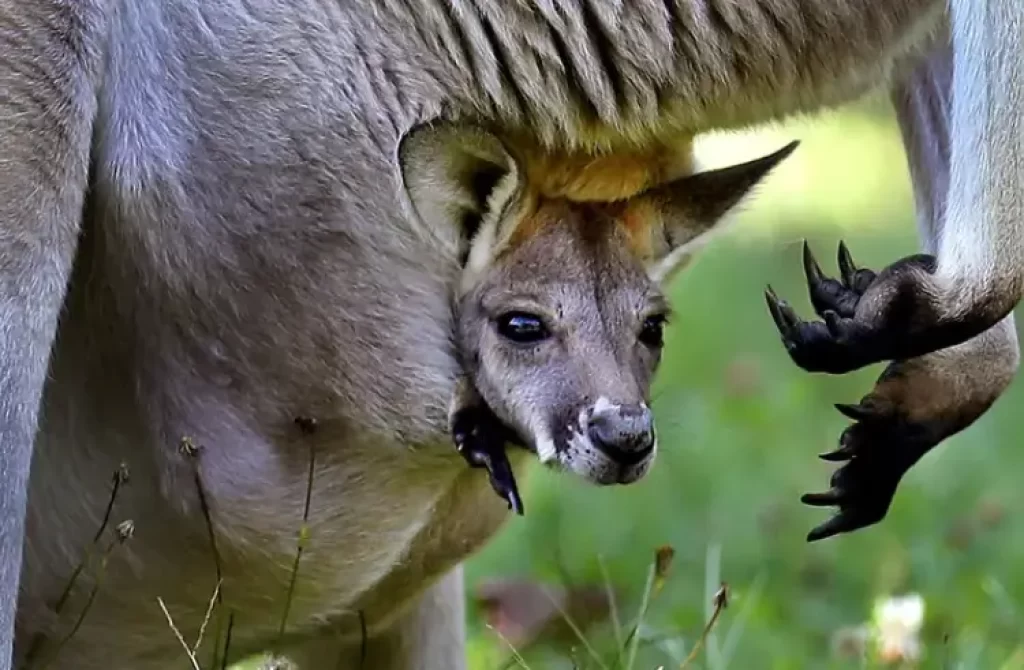
After several months of growth and development, the joey becomes more independent and starts venturing outside the pouch. However, it still returns to the safety and comfort of the pouch for nourishment and rest. Over time, the joey spends less time inside the pouch and eventually becomes fully independent.
How big is a joey when it leaves the pouch?
When a joey leaves the pouch, it has undergone significant growth and development compared to its tiny size at birth. The size of a joey when it ventures out of the pouch varies depending on the kangaroo species.
On average, at the time of leaving the pouch, a joey can be around 6 to 9 months old and approximately 30 to 40 centimeters (12 to 16 inches) in length. They have grown considerably since their miniature size at birth and are starting to resemble a smaller version of an adult kangaroo.
While joeys may leave the pouch, they still maintain a close relationship with their mother and often continue to return to the pouch for comfort, rest, and occasional nursing.
As they become more independent and capable of exploring their surroundings, they gradually spend less time inside the pouch until they eventually become fully weaned and self-sufficient.
The growth and progression of a joey from a minute newborn to a capable young kangaroo highlight the incredible transformation and resilience of these remarkable creatures
Conclusion
The journey of a newborn kangaroo, or joey, is a marvel of nature. Starting as a tiny, underdeveloped creature, they find their way into their mother’s pouch, where they grow and thrive.
The size of a newborn kangaroo is minuscule, resembling a mere speck compared to their eventual size. As they progress through their pouch-bound stage, they gradually develop into strong and independent kangaroos.
The size of a newborn kangaroo offers us a glimpse into the unique reproductive strategies of these incredible marsupials. It reminds us of the wonders of nature and the remarkable ways in which different species bring their young into the world.
So, the next time you encounter a kangaroo, take a moment to appreciate the incredible journey of their joeys and the intricate beauty of life’s beginnings.
If you’re curious to explore more about kangaroos and their fascinating world, hop on over to our other articles. We’ve got a treasure trove of photos, and fun facts waiting for you. Get ready to deepen your knowledge and appreciation for these magnificent creatures. Happy kangaroo adventures!

